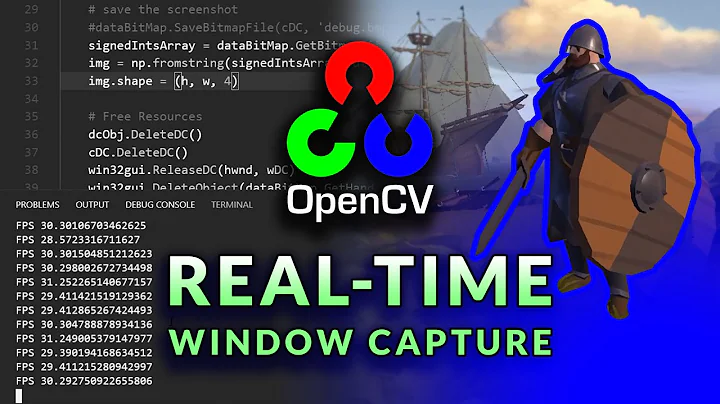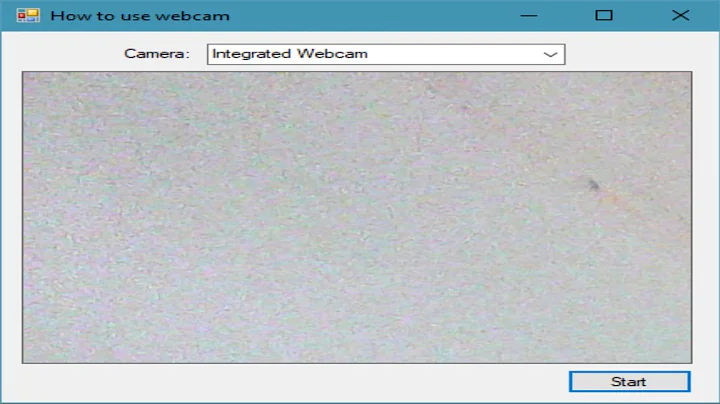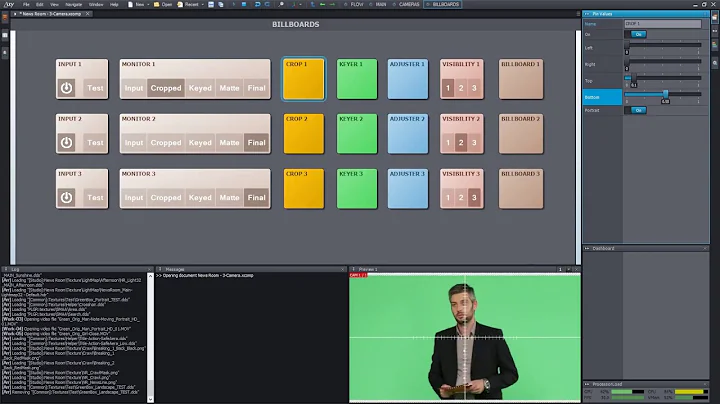Capture visual output of a DirectX application - even in background?
Solution 1
To capture Direct3D windows that are in the background (or moved off screen), I believe you have the following options:
Inject and hook Direct3D within the target application via the link you have already posted or this more up-to-date example (EasyHook can be difficult to get setup but it does work really well) - you can always ask for help about getting it working. I have used that technique for capturing in a number of games without issues (most recently for an ambilight-clone project). The problem with this approach is your concern about game protection causing bans, however FRAPs also uses hooking to achieve this, so perhaps your concerns are exaggerated? I guess gamers being banned for a screen shot is an expensive way of finding out.
For windowed applications on Vista/Win 7 - you could inject and hook the DWM and make your capture requests through its shared surface. I have had this working on Vista, but have not finished getting it working on Windows 7, here is an example of it working for Windows 7 http://www.youtube.com/watch?v=G75WKeXqXkc. The main problem with this approach is the use of undocumented API's which could mean your application breaks without any warning upon a windows patch release - also you would have to redo the technique for each new major Windows flavour. This also does not address your need to capture in Windows XP.
Also within the DWM, there is a thumbnail API. This has limitations depending on what your trying to do. There is some information on this API along with other DWM API's here http://blogs.msdn.com/b/greg_schechter/archive/2006/09/14/753605.aspx
There are other techniques for intercepting the Direct3D calls without using EasyHook, such as substituting the various DLL's with wrappers. You will find various other game hooking/interception techniques here: http://www.gamedeception.net/
Simply bring the Direct3D application to the foreground (which I guess is undesirable in your situation) - this wouldn't work for off-screen windows unless you also move the window.
Unfortunately the only solution for Windows XP that I can think of is intercepting the Direct3D API in some form.
Just a clarification on Direct3D rendering while minimised. During my fairly limited testing on this matter I have found this to be application dependant; it is generally not recommended that rendering take place while the application is minimized (also this reference), it does continue to render while in the background however.
UPDATED: provided additional link to more up-to-date injection example for point 1.
Solution 2
A quick google and i found this Code Project which relates to Windows XP. I dont know if you can apply this knowledge to Windows Vista and 7??
http://www.codeproject.com/Articles/5051/Various-methods-for-capturing-the-screen
EDIT:
I found this article as well:
http://www.codeproject.com/Articles/20651/Capturing-Minimized-Window-A-Kid-s-Trick
This links off from Justins blog post here from the comments. It seems he was working on this with someone (i see thats your link about).
http://spazzarama.com/2009/02/07/screencapture-with-direct3d/
Solution 3
The code that you linked to (from spazzarama), which you said you were using in your project, captures the front buffer of your DirectX device. Have you tried capturing the back buffer instead? Going from the code on your linked site, you would change line 90 from
device.GetFrontBufferData(0, surface);
to
Surface backbuffer = device.GetBackBuffer(0, 0, BackBufferType.Mono);
SurfaceLoader.Save("Screenshot.bmp", ImageFileFormat.Bmp, backbuffer);
This would also involve removing lines 96-98 in your linked example. The backbuffer might be generated without the obstructing window.
EDIT
Nevermind all of that. I just realized that your linked sample code is using the window handle to define a region of the screen, and not actually doing anything with the DirectX window. Your sample code won't work around the obstruction because your region is already drawn with the other window in front of it by the time you access it.
Your best bet to salvage the application is probably to bring the DirectX window to the top of the screen before running the code to capture the image. You can use the Wind32API BringWindowToTop function to do that (http://msdn.microsoft.com/en-us/library/ms632673%28VS.85%29.aspx).
Related videos on Youtube
Comments
-
Vercas almost 2 years
I need to capture the visual output (like a screenshot) of a DirectX window. Currently, I use this approach.
But, when the window is in background, it captures whatever is in front of it.I see that DirectX windows render even when minimized or in background, so this should be possible.
But, how? (It also needs to be fast, and it needs to work on Windows XP too, unfortunately...)Edit: I am very busy these days... Don't worry, I'll put the bounty back if it expires.
-
Vercas about 12 yearsDid I not mention C#? Also, it seems to look at the "front buffer", which is the whole screen. I need the buffer of the application explicitly.
-
garfbradaz about 12 yearsAPologies i didnt see that. Mmmmmnnnn im trying to think what i would do in XNA (I know this isnt DirectX) and think of a solution. Let me think.
-
Vercas about 12 yearsI'm already using SetForegroundWindow for this, but it requires complex interprocess communication to make sure that two programs do not jump in front at the same time... It is highly inefficient and bottlenecks my application.
-
Vercas about 12 yearsUh, lemme expwain this. The Code Project article you linked me doesn't work with DirectX windows. Some do not show up at all, some appear gray. If I remember right, windows with no border style also don't work. Now, the screen capturing with Direct3D article involves hooking into the application. The problem is, most DirectX applications are games, and most games are protected by things such as VAC and Game Guard, which will kill the game process instantly and give me a warning or an immediate permanent ban.
-
Vercas about 12 yearsBy the capturing with Direct3D article I meant the Direct3D API article for either D3D9 or 9, 10 and 11... None of them work because I cannot get EasyHook to work, and even if I could, it could trigger a game protector and mess me up really bad.
-
Justin Stenning about 12 yearsIf hooking the target application is absolutely not possible, then you can look at going via the DWM (not on XP obviously) - only works for windowed applications not fullscreen. FRAP's uses hooking also so I'm sure there is a level of hooking that is tolerated by game protection techniques but what that is I don't have any idea... Re: EasyHook, there is work under way for simplifying the process to no longer require installing into the GAC - you will find the results of this in this project once it all passes alpha (github.com/spazzarama/Direct3DHook)
-
Vercas about 12 yearsI looked into DWM... But I cannot simply get the capture on a bitmap and I have to use WPF (if it's possible to draw a Visual on a bitmap). This approach has two huge disadvantages, and I honestly tried it... I just can't get the image on a bitmap. If I draw it on a Control and I try to convert it to a bitmap, I get the background of the control, because DWM draws directly in video memory.
-
Justin Stenning about 12 yearsI forgot to mention that EasyHook also provides kernel/driver level support for hooking - I'm guessing that this is similar to how people like PLAYXPERT have their game overlay system working.
-
Vercas about 12 yearsI have done some research and found out that most game protectors use drivers to monitor the games... There is no way I can safely inject code into a process without a "developer license" from the game protector(s). There must be another way... How the heck does DWM get the thumbnails in the first place??
-
Justin Stenning about 12 yearsI believe DWM uses shared surfaces and DXGI, a good overview of this is here: msdn.microsoft.com/en-us/library/windows/desktop/… I don't think it is possible to initiate a shared surface without first having a reference to the Device so you still need something in the target application.
-
Justin Stenning about 12 yearsI should clarify that I don't think it is possible to get a reference to the Device without having something injected in the target application OR by using undocumented API's
-
Vercas about 12 yearsThen I guess I will risk hooking... :|
-
MooshBeef almost 11 yearsi once made a game in xna, i had launched visual studio from steam. when i started debugging i could access the steam overlay(shift+tab). which told me that the steam overlay hooks itself into directx




![[VB.NET] Tutorial Capture Picture From Camera Step by Step 2016](https://i.ytimg.com/vi/UerRxfj7qyM/hqdefault.jpg?sqp=-oaymwEcCOADEI4CSFXyq4qpAw4IARUAAIhCGAFwAcABBg==&rs=AOn4CLC-RiH3TzAqaguP2Y5SvcnVZLojSQ)





